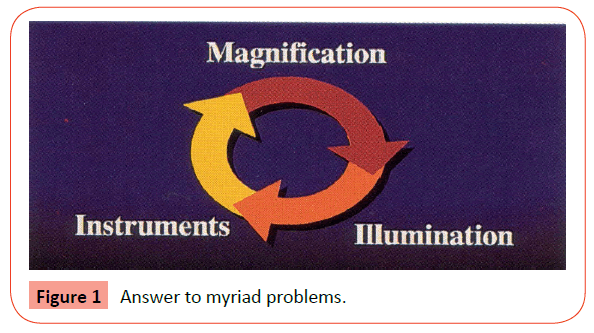Endodontic Surgery ÃÆâÃâââ¬Ãâââ¬Å A Challenge to an Endodontist
Mohammed Mustafa
DOI10.21767/2469-2980.100031
Department of Conservative Dental Sciences, College of Dentistry, Prince Sattam bin AbdulAziz University, Kingdom of Saudi Arabia
- Corresponding Author:
- Mohammed Mustafa
Assistant Professor and Head of Endodontics Division
Department of Conservative Dental Sciences, College of Dentistry
Prince Sattam bin AbdulAziz University, P.O. Box 153, AlKharj - 11942, Kingdom of Saudi Arabia.
Tel: 0096611-5886240
E-mail: ma.mustafa@psau.edu.sa; docmdmustafa@consultant.com;
Received Date: November 13, 2016; Accepted Date: November 16, 2016; Published Date:November 21, 2016
Citation: Mustafa M. Endodontic Surgery A Challenge to an Endodontist. J Orthod Endod. 2016, 2:4. doi: 10.4172/2469-2980.100031
Copyright: © 2016 Mustafa M. This is an open-access article distributed under the terms of the Creative Commons Attribution License, which permits unrestricted use, distribution, and reproduction in any medium, provided the original author and source are credited.
For years together, many dentists unaccountably have separated endodontics into two divisions: Conservative and Surgical.
The term ‘conservative’ has been used as a synonym of nonsurgical treatment since 1884 when Farrar described “radical and heroic treatment of alveolar abscess” [1].
Noah Chivian correctly protested that using the term conservative to mean “without surgery” would indicate that surgery is a radical approach. However, because surgical endodontic approach is often the only method of salvaging otherwise hopeless teeth, it is indeed conservative.
According to strictest sense and definition of the word “surgery”, most endodontic treatments fall into the category of a surgical procedure, since; it involves removal of tissues, such as vital pulp, necrotic debris or dentin.
The term “Endodontic surgery” encompasses surgical procedures performed to remove the causative agents of radicular and periradicular disease and to restore these tissues to functional health.
Currently, endodontic surgery falls into more than one domain and is a predictable and integral part of comprehensive endodontic services.
Presently, there are four major areas of surgical endodontics, namely, surgical drainage, radicular surgery, replacement surgery and implant surgery. These areas of endodontic surgery have certain basic similarities but have considerable differences as well in terms of indications and techniques, which should be well known to the endodontists, as it has been correctly said by Late Dr. Irwing J. Naidorf, that “A good surgeon knows how to cut, but, an excellent surgeon knows when to cut” [2].
Hence, the modern day dental surgeon, who performs this surgery, must have in-depth knowledge of surgical principles, case selection, indications and contraindications of the procedure and recent advances.
Although, over the past few decades, the list of indications for surgery has diminished, there are definite cases in which the tooth cannot be saved without surgery and these constitute the ‘core’ of indications. But, the surgical approach is indicated only when non-surgical retreatment is not possible or will not correct the problem, as, endodontic surgery has often been perceived with skepticism because of high precision requirement, low success rate and management of conscious, nervous patients (Figure 1).
With the recent advent of magnification and illumination, coupled with ultrasonic root-end preparations and sealing with new retrograde materials, the success of surgical endodontic treatment will provide the answer to solving myriad problems that were once considered hopeless [3-5].
Other important factors that have enhanced the success and increased the application of surgery are research and education. Advanced endodontic programs have increasingly emphasized surgical training in response to the need for this treatment approach.
The expanded scope of endodontic surgery includes apical curettage, apicoectomy, root-end filling, root resections, hemisection, replantation, transplantations, and guided tissue regeneration, with more advances on the horizon [6-9].
There has been a sea of changes in approach towards surgical endodontics in the past decade or two, due to an avalanche of new techniques and materials which have given clinician a wide range of choices in this conservative approach and allow him to go ahead, with confidence, in treatment, management and conservation of each tooth that could not be otherwise saved [10,11].
An exhaustive effort towards conservation of maximum possible tooth structure has been justified by the fact that a mouth without teeth is like a mill without it’s stone, and you must value a tooth more than a diamond.
References
- Farrar JN (1884) Radical and heroic treatment of alveolar abscess by amputation of roots of teeth. Dent Cosmos 26:79-81.
- Dibart S (2007) Practical Advanced Periodontal Surgery. Blackwell Publishing Company pp: 3-95.
- Kim S, Pecora G, Rubinstein R (2001) Color Atlas of Microsurgery in Endodontics. WB Saunders.
- Dental Clinics of North America: Microscopes in Endodontics (1997) Saunders Publications 41: 3.
- Kim S, Kratchman S (2006) Modern endodontic surgery concepts and practice: a review. J Endod 32:601.
- Bellizzi R, Loushine R (1991) Clinical atlas of endodontic surgery, Quintessence Publishing, Chicago, USA.
- Rubinstein R, Kim S (2002) Long-term follow-up of cases considered healed one year after apical microsurgery. J Endod 28: 378.
- Ingle JI,BaklandLK (2008) Endodontics (6th edn.) BC Decker Inc, Hamilton.
- GuttmannJL, Pitt Ford TR (1993) Management of the resected root-end: a clinical review. Int. Endod J 233: 273-283.
- Cohen S, Richard CB (2015) Pathways of pulp(11thedn.)Elsevier eBook.
- Torabinejad M, Walton RE (2009) Principles and practice of endodontics (4th edn.) Elsevier eBook.
Open Access Journals
- Aquaculture & Veterinary Science
- Chemistry & Chemical Sciences
- Clinical Sciences
- Engineering
- General Science
- Genetics & Molecular Biology
- Health Care & Nursing
- Immunology & Microbiology
- Materials Science
- Mathematics & Physics
- Medical Sciences
- Neurology & Psychiatry
- Oncology & Cancer Science
- Pharmaceutical Sciences

